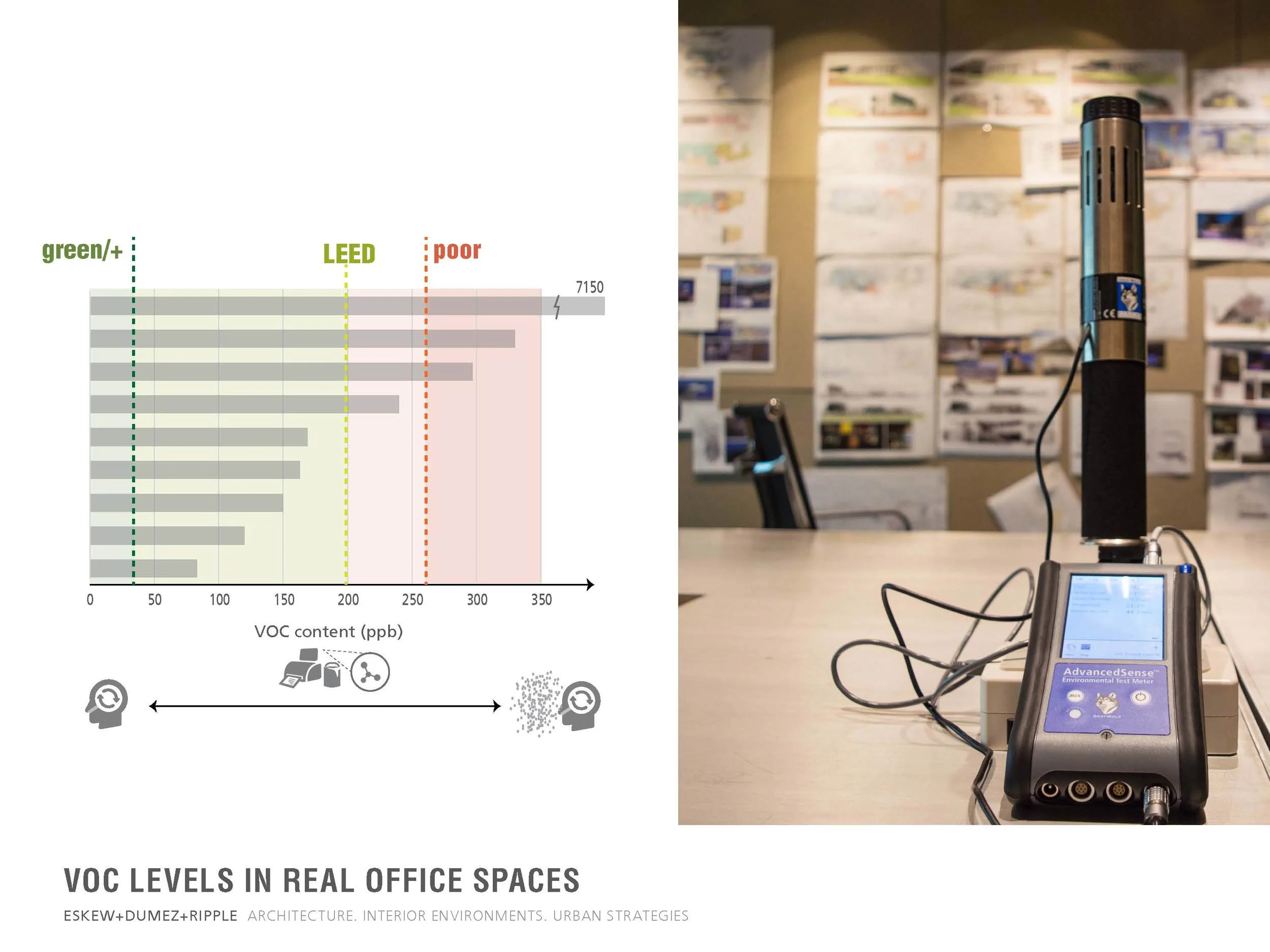The Evolving Workplace
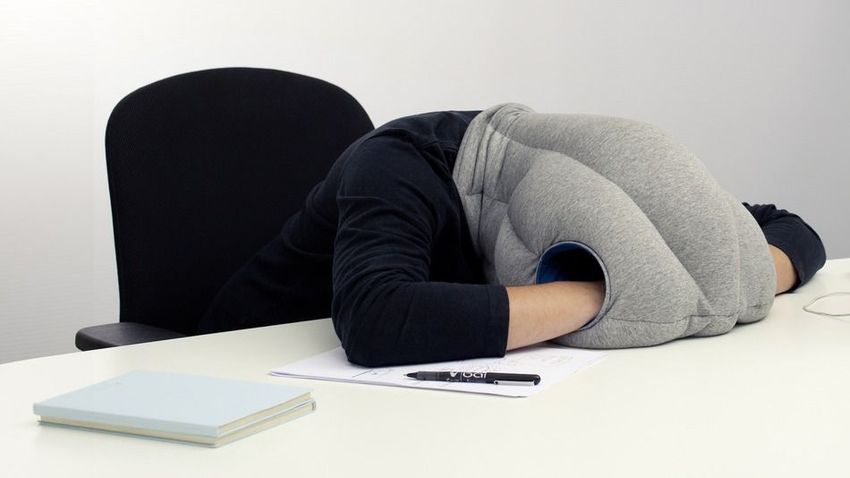
On Tuesday, a team from EDR presented research and case studies to discuss how the workplace is ever evolving to meet the needs of the modern workforce. The first workplace adaptation addresses different work styles by providing the whole range of formal to informal, private to public and small to big scale. The second considers how technology changes way faster than the building envelope or the work environment - by designing with flexibility of technology in mind. The third is the growing trend of shrinking individual spaces and expanding collaborative spaces as the nature of work becomes more and more knowledge based.
The final adaptations deal with health in the environment, the subject of this past year's Research Fellowship. With salaries and benefits accounting for 90% of operational costs, where better can companies invest than in their own employees? Today's research quantifies the impact of built environment variables on health and productivity outcomes. From air quality to active workplace design to biophilic design, the importance of addressing health in the workplace represents an opportunity for companies to build their firm culture and show care for employees.
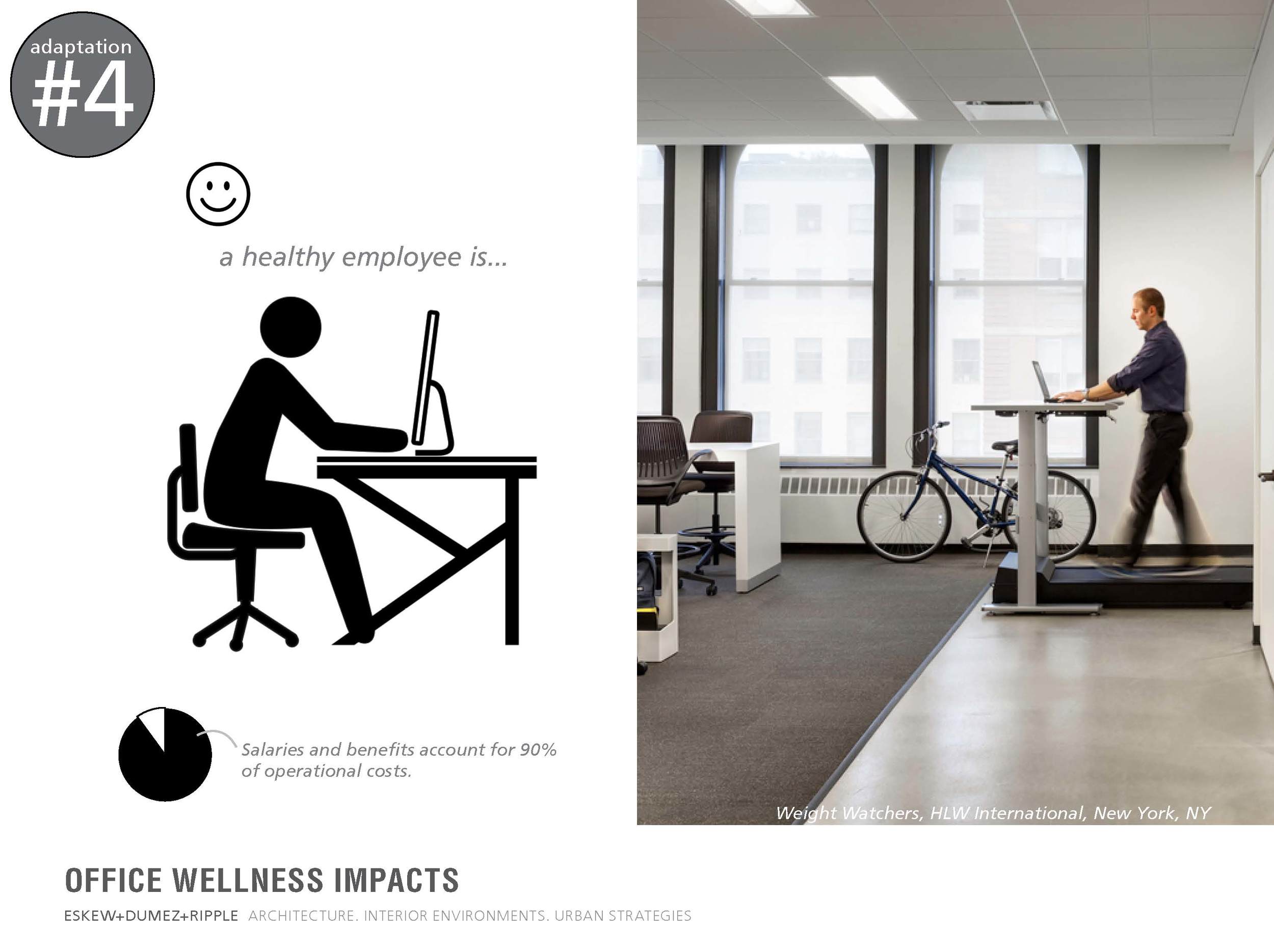
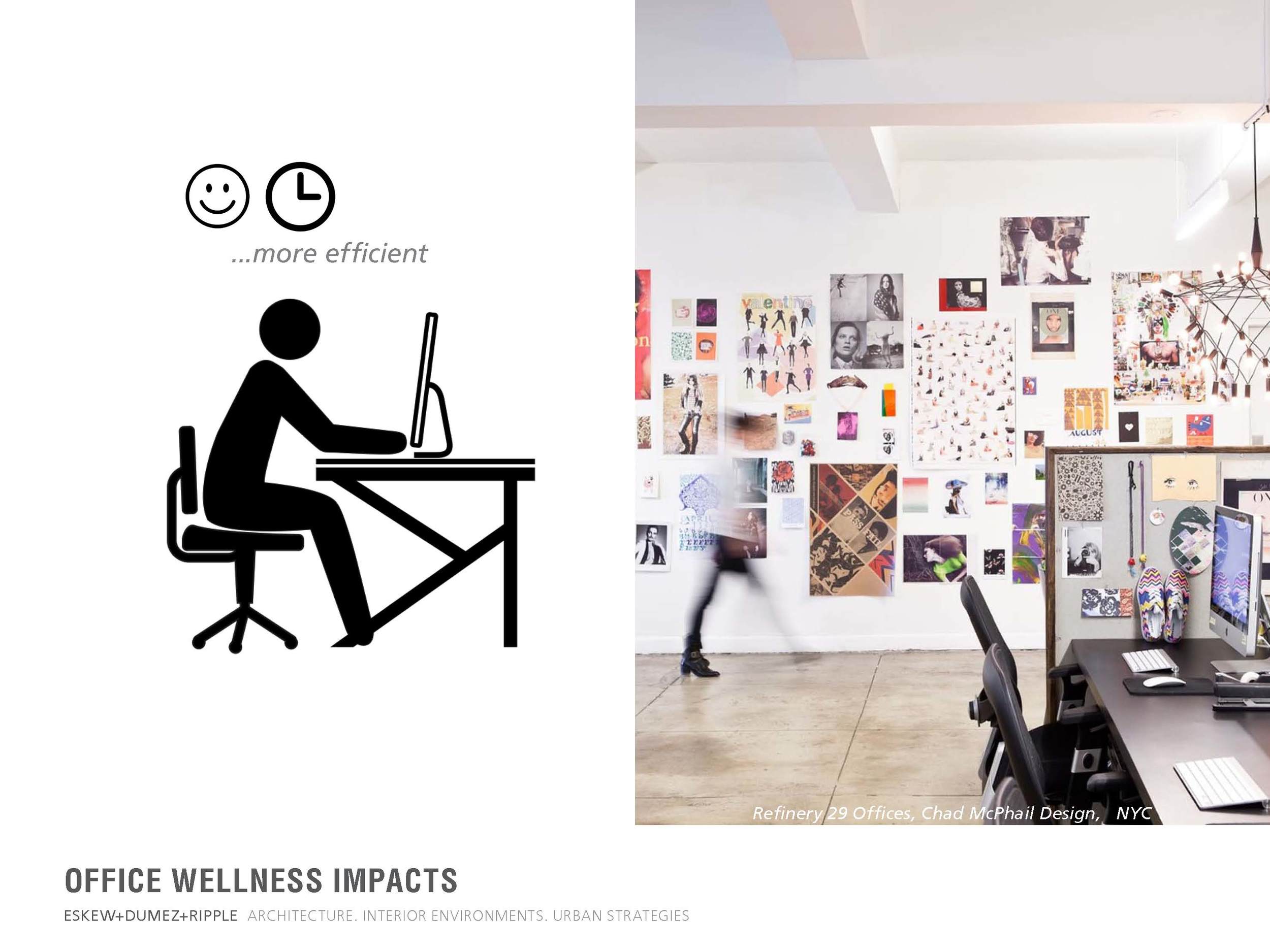

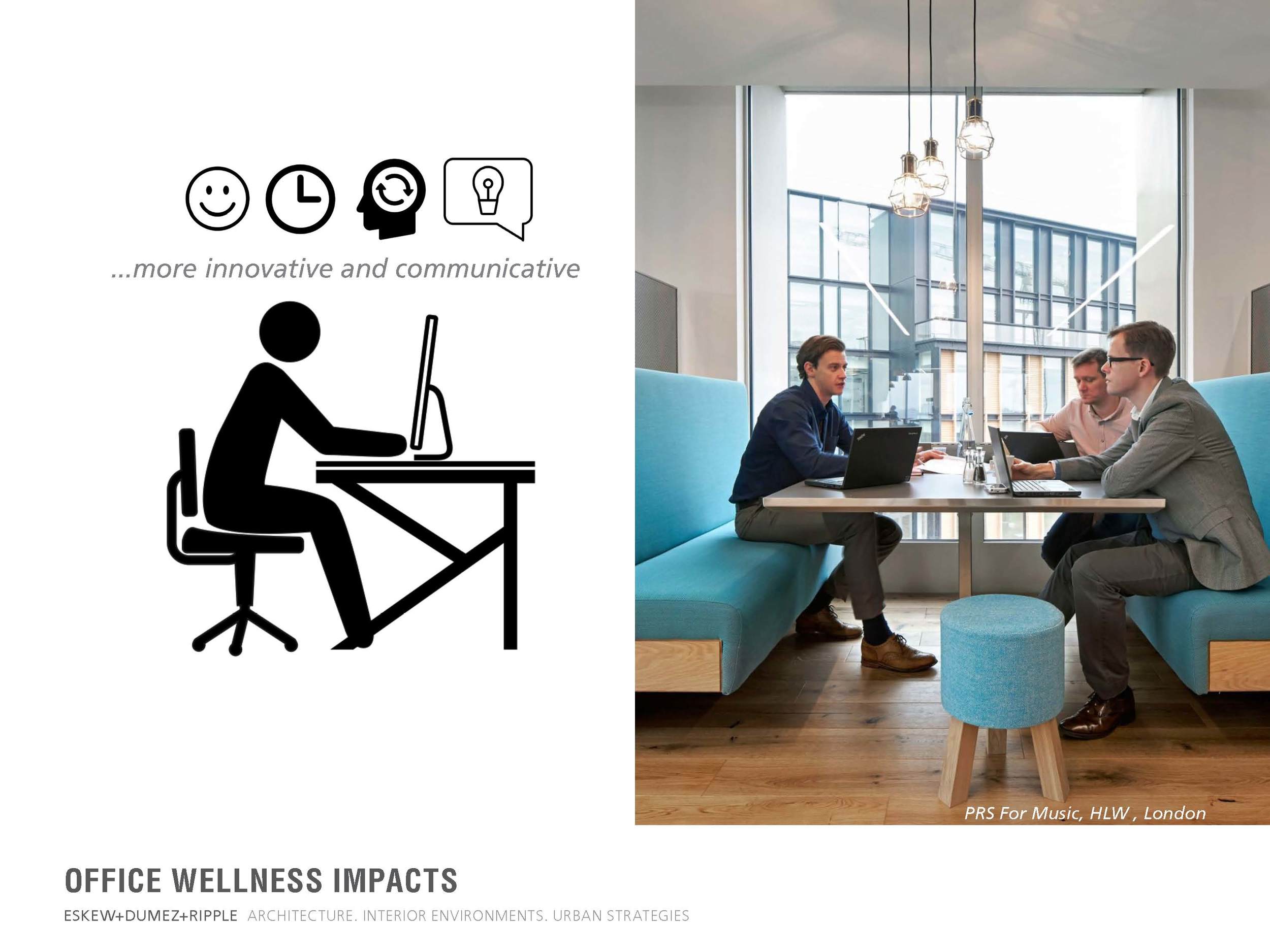
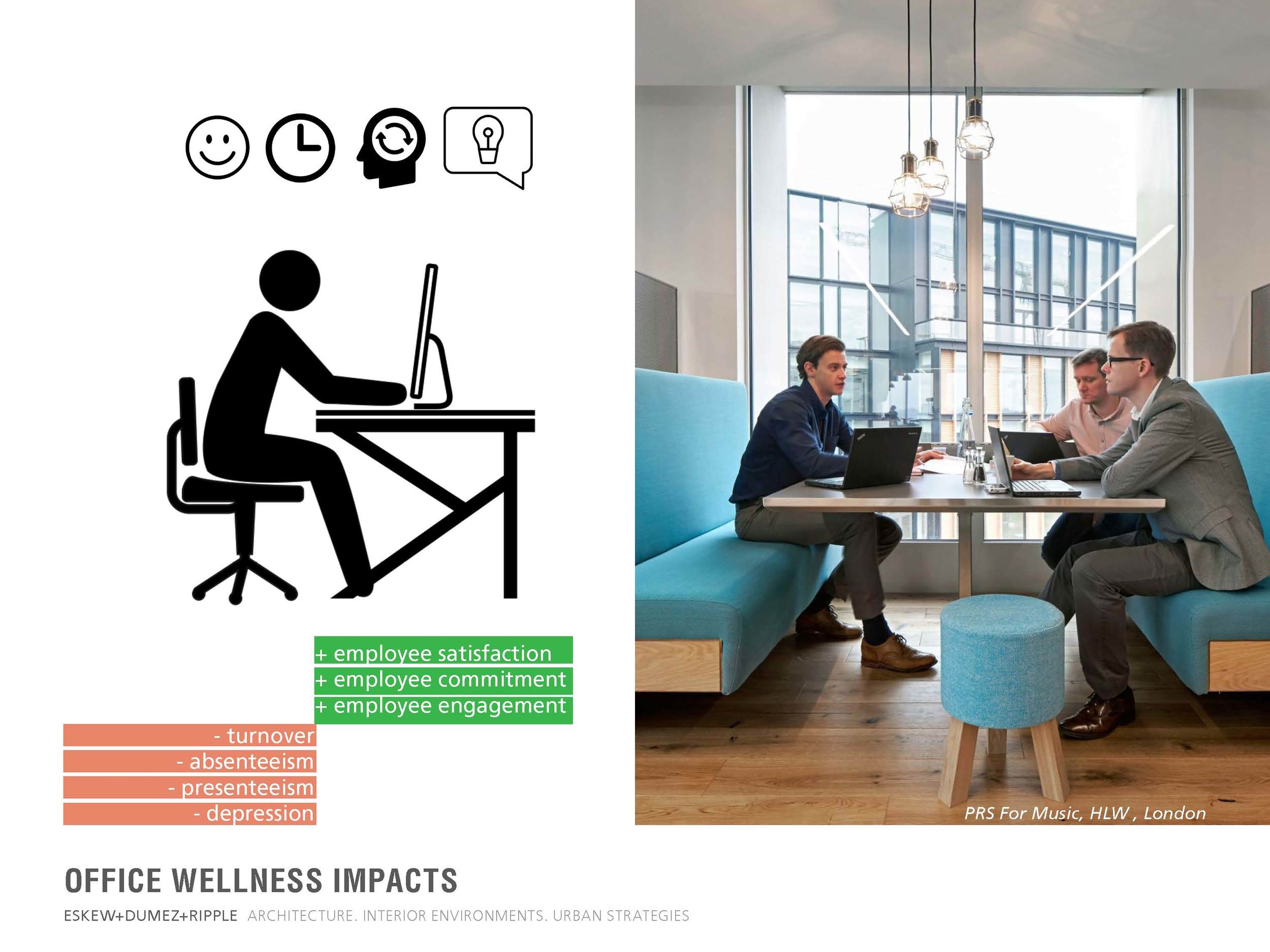
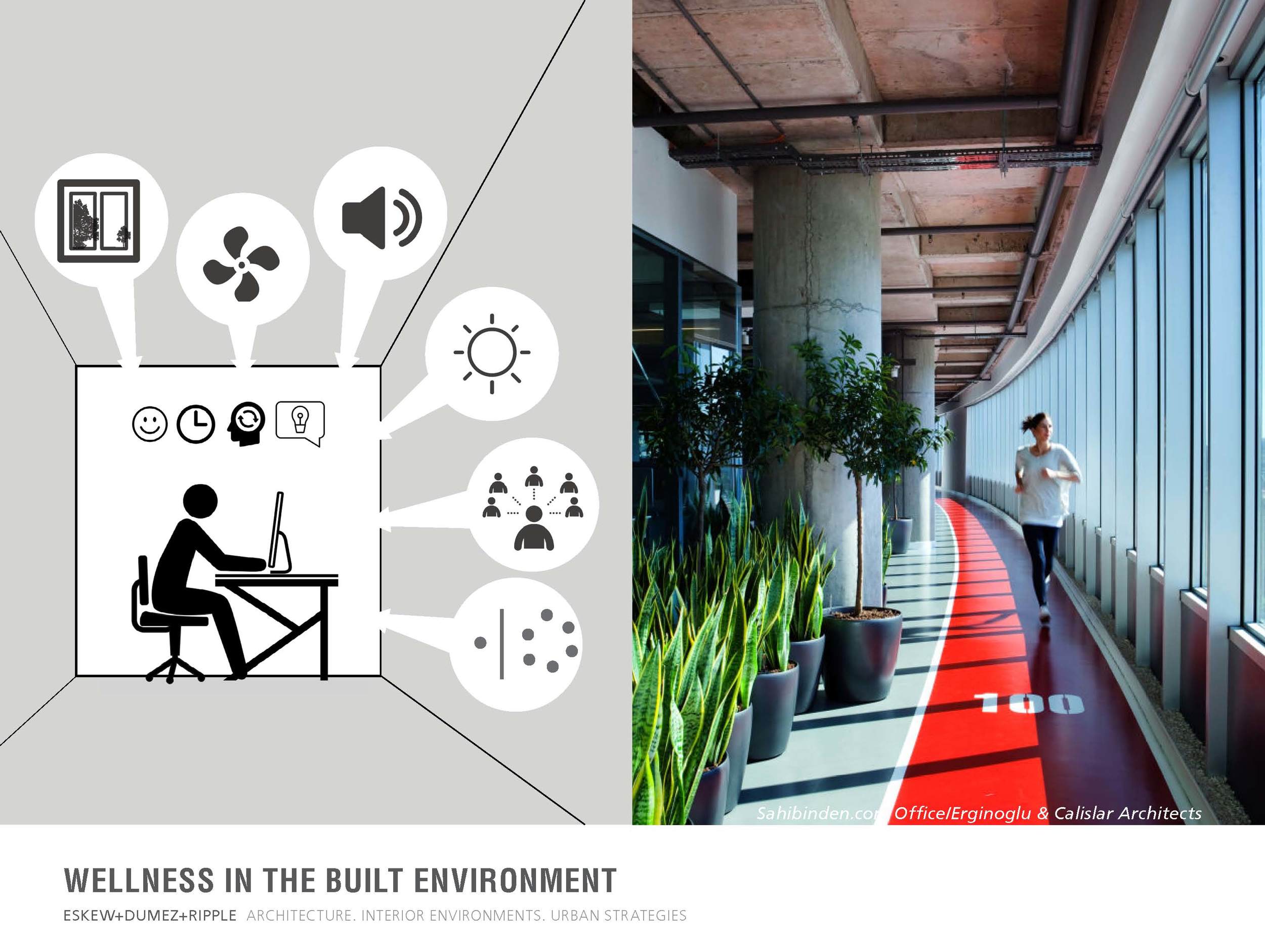

Is a healthy employee more efficient, productive, communicative and engaged? Here's some evidence supporting the health impact of workplace design:
In 2015, a Harvard University research group tested 24 participants through a double-
blind study on the impact of indoor air quality on productivity. The participants, a
group of architects, engineers and other knowledge-based workers, tested in eight
decision-making categories simulating everyday work (abilities like initiation, strategy
and information seeking). Researchers varied CO2 and VOC levels over the course of the
six day study, creating three distinct conditions. In the frst condition, CO2 levels were at
typical CO2 levels in an office, just below 1000 ppm. VOC levels were raised to 586 ug/
m3. Participants (test results averaged) scored at the conventional baseline level shown
by the red bar and the dashed line in the image above. In the second condition, VOC
levels were reduced, but CO2 levels remained the same. A 61% improvement in scores
resulted. The final condition kept the same low VOC levels, but lowered CO2 levels
further. Participants scored almost twice as well in this highest air quality condition. The
study quantifies an instantaneous impact that air quality has on productivity.
To put the study into context, we took measurements in some spaces in our own building. Our own office space VOC level was below the LEED threshold shown above, but our 3D printing room exceeded it. Because only spot measurements were taken, we noted one particularly high measurement following a glass cleaning event in one office - over 7000 ppb. Many spaces fell below the LEED prescribed level, but none were quite at the low level of the study.
The below study (one of many of its kind) compared workers with a window to those
without. Workers with a window got more white light exposure and perhaps as a result
of improved circadian entrainment, got 46 minutes more sleep every night. They were also four times more active during the day, which if studies about the cognitive benefits of increased activity are true, may be improving their productivity further.
As our understanding of human health continues to evolve, so should our environments. With people spending eight or more hours in their office a day - half their waking hours - its a prime location for health investment.

